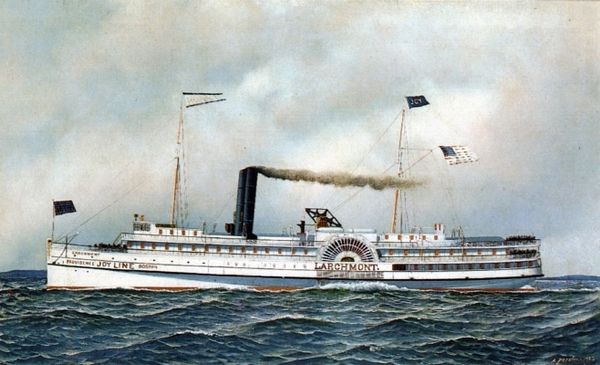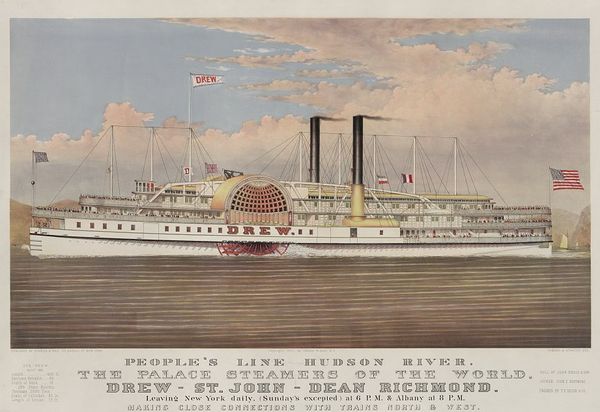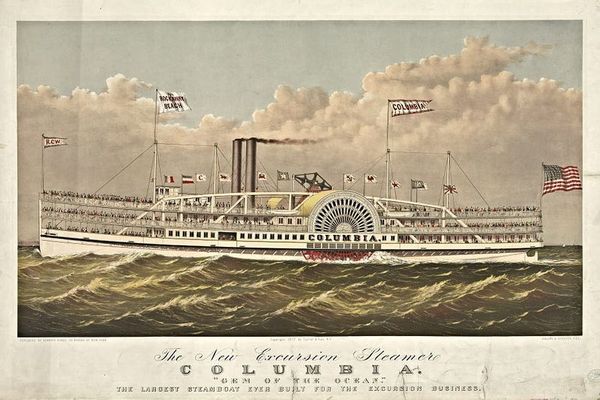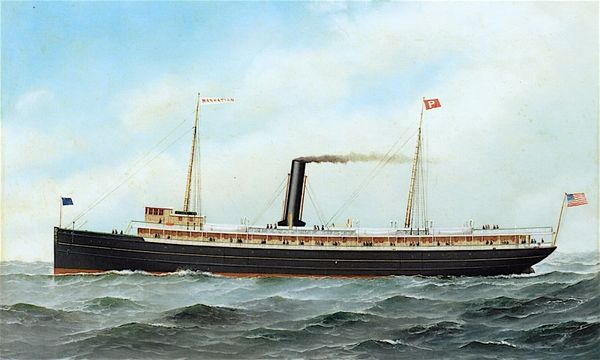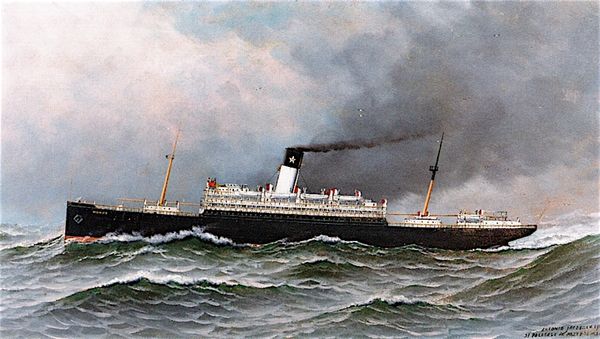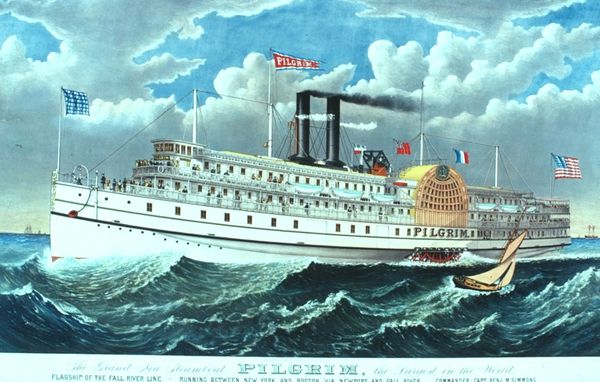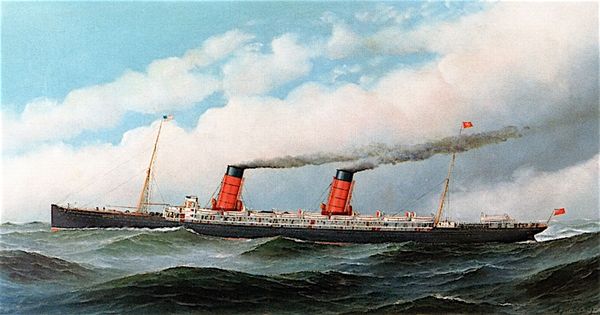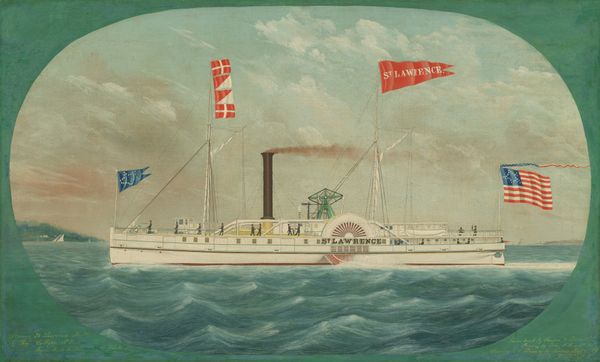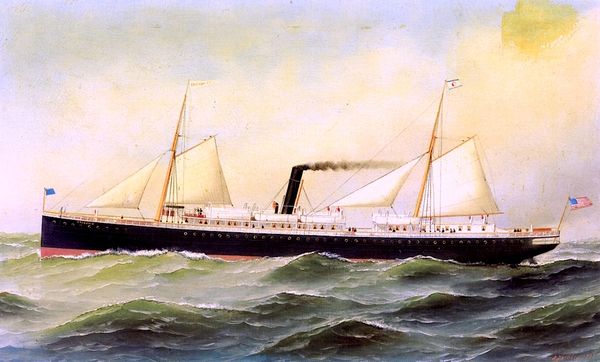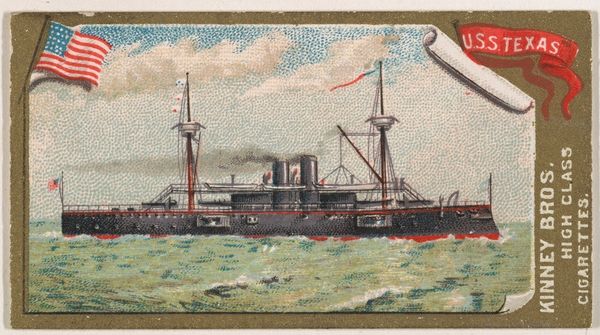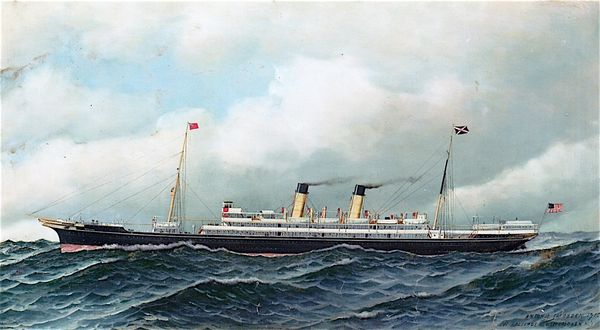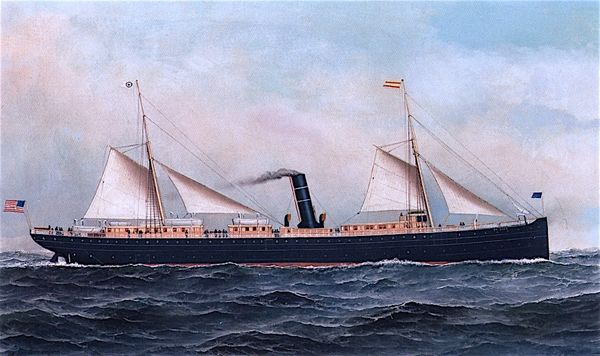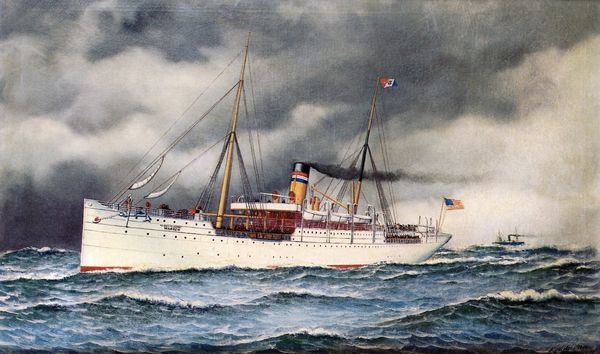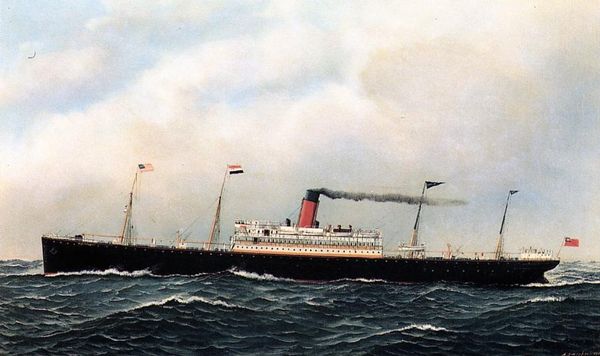
lithograph, print
#
water colours
#
lithograph
#
ship
# print
#
landscape
#
possibly oil pastel
#
handmade artwork painting
#
oil painting
#
cityscape
#
genre-painting
Copyright: Public domain
Curator: Let’s examine “The Steamer Puritan, part of the 'old' Fall River Line,” a lithograph created by Currier and Ives in 1889. What are your initial thoughts? Editor: Well, it’s striking how the artist captures the layered details of the steamboat, particularly its clean lines and prominent position in the composition. The textures created, like those of the billowing waves, invite you to run your fingers across the lithograph. Curator: Lithography was an accessible medium in the 19th century, and prints like these were essentially promotional materials. Currier and Ives mass-produced these images, distributing them widely to celebrate industrial achievements and entice travelers to experience luxury travel on the Fall River Line. Editor: True, yet there’s a studied formal elegance to the print. Note how the white of the ship contrasts with the turbulent blues and greens of the water. The interplay creates depth. Then, you have those parallel lines making up the waves themselves—suggesting movement but remaining highly stylized. Curator: Absolutely. The focus was not merely aesthetic, however. Consider the materiality itself. Built of steel and iron as stated beneath the image, this speaks volumes about America’s rising industrial might. The “Puritan” represented more than transportation; it represented industrial prowess, economic development, and class distinction. Editor: You make a valid point about context, however, I am drawn back to its pictorial qualities. The American flag in conjunction with the Fall River Line flag atop the steamboat emphasize ideas about nationhood. There’s the suggestion of grand adventure with this vessel forging ahead into what the artist paints as an open sea. Curator: Considering its production and context gives it meaning; otherwise, it just hangs mutely on the wall. For all its appeal, this print primarily functioned to support and expand the commercial interests tied to that boat. Editor: Fair enough. Yet analyzing those formal features—lines, contrast, color—they guide viewers through specific aspects of how people perceived industrial advances and grandeur during that era. It is a valuable record whether hung in one's parlor, or studied in our modern museum setting.
Comments
No comments
Be the first to comment and join the conversation on the ultimate creative platform.
